Teaching Young Adult Literature Today
Teaching Young Adult Literature Today
Insights, Considerations, and Perspectives for the Classroom Teacher
Edited by Judith A. Hayn, Jeffrey S. Kaplan, and Karina R. Clemmons
Second Edition
ROWMAN & LITTLEFIELD
Lanham Boulder New York London
Published by Rowman & Littlefield
A wholly owned subsidiary of The Rowman & Littlefield Publishing Group, Inc.
4501 Forbes Boulevard, Suite 200, Lanham, Maryland 20706
www.rowman.com
Unit A, Whitacre Mews, 26-34 Stannary Street, London SE11 4AB, United Kingdom
Copyright 2017 by Judith A. Hayn, Jeffrey S. Kaplan, and Karina R. Clemmons
All rights reserved . No part of this book may be reproduced in any form or by any electronic or mechanical means, including information storage and retrieval systems, without written permission from the publisher, except by a reviewer who may quote passages in a review.
British Library Cataloguing in Publication Information Available
Library of Congress Cataloguing-in-Publication Data Available
ISBN: 978-1-4758-2946-4 (cloth : alk. paper)
ISBN: 978-1-4758-2947-1 (pbk. : alk. paper)
ISBN: 978-1-4758-2948-8 (electronic)
 The paper used in this publication meets the minimum requirements of American National Standard for Information SciencesPermanence of Paper for Printed Library Materials, ANSI/NISO Z39.48-1992.
The paper used in this publication meets the minimum requirements of American National Standard for Information SciencesPermanence of Paper for Printed Library Materials, ANSI/NISO Z39.48-1992.
Printed in the United States of America
John H. Bushman
Advisor, Mentor, Friend
JAH
My parents, Anita, and James Kaplan
JSK
To my dear family, friends, and all those who work to improve the world through education.
KRC
Contents
Judith A. Hayn and Jay Cobern
Jeffrey S. Kaplan and Elsie L. Olan
Susan E. Elliott-Johns
Kelly Byrne Bull and Juliann Dupuis
Nance S. Wilson and Michelle J. Kelley
Crag Hill and Janine Darragh
Laura Renzi, Mark Letcher, and Kristin Miraglia
Lisa A. Hazlett and William J. Sweeney
Barbara A. Ward, Deanna Day-Wiff, and Terrell A. Young
Steven T. Bickmore and Isaac Bickmore
Lois T. Stover, Jacqueline Bach, and C. J. Carver
Linda T. Parsons
Karina R. Clemmons and Laura Langley
Wendy Williams and James Blasingame
Melanie Hundley and Teri Holbrook
Colleen Sheehy Mulholland
Melanie D. Koss
The efficacy and popularity of young adult literature/adolescent literature is apparent from the emerging teen read sections in bookstores, the expansion of young adult libraries, and the proliferation of adolescent literature in the media. The genre in itself is new, however, and often seen as the bumbling younger sibling of the more respectable and researched childrens literature. The purpose of the second edition of this text is to extend the genre, no matter its name, by looking at where young adult literature (YAL) stands in the research arena, where it is in contemporary literacy, and where it might expand as YAL develops and grows.
When we were first asked to submit a second edition of this text, Jeff Kaplan and I were thrilled that the book was being used in enough adolescent literature courses to merit a re-examination and re-issue. Adding a third editor, we then polled our previous authors for their interest in contributing to this endeavor. To our surprise, all authors indicated a wish to submit a chapter for us. We consider this a validation of not only YAL, but also of our colleagues commitment to the power of adolescent literature in changing teen lives, literacy, and learning.
Section one begins in chapter 1 with an examination of the empirical research that cites adolescent literature, YAL, and research as the framework for study. Hayn and Cobern searched for and analyzed scholarly research published in the last five years. Kaplan and Olan in chapter 2 update the current status of the YAL field while Elliott-Johns presents in the third chapter an update to her analysis and discussion of perspectives in current research and practice that are related to young adult literature and teacher education; she particularly focuses on the classroom, teachers, and students.
In section two, noted YAL experts, scholars, and advocates examine the current landscape of the genre. Bull and Dupuis discuss in chapter 4 the emerging theme of environmentalism in YAL and focus on its interdisciplinary promise. Chapter 5 relates Wilson and Kelleys view of adolescents reading for pleasure; they examine the data surrounding teens and reading for their own enjoyment; they recommend texts that will help motivate adolescent readers. Hill and Darragh in chapter 6 suggest decision-making skills taught through YAL focusing on poverty as a method of addressing student awareness.
In the one of only two updated chapters in section two, chapter 7, Renzi, Letcher, and Miraglia select contemporary YAL titles that address gender and sexuality by expanding the parameters of their study of LGBT adolescent works. The other update is by Hazlett as she and Sweeney in chapter 8 challenge the misconception that assails YAL; adolescent literature simply lacks the quality of classics in the canon. They offer additional validation and suggestions for utilizing quality as a criterion in young adult text selection.
Ward, Day, and Young offer a provocative rationale in chapter 9 for teaching Civil Rights using young adult works; they maintain that this social justice topic receives little attention in schools, and YAL can be used to remediate that. Chapter 10 features father and son team, Bickmore and Bickmore, who argue that paying attention to adolescents experiences and knowledge bases in designing curriculum offers opportunities for relevance; they analyze the use of music in YAL to accomplish this goal. Stover, Bach, and Carver issue in chapter 11 a call for activism and social awareness through service-learning that is rooted in YAL; they offer examples, texts, and suggestions for action plans. Chapter 12 guides us through Parsons examination of the world of fat protagonists in teen literature and how obesity and the idealized female body concept can be challenged through young adult books that address the topic.
Clemmons and Langley in chapter 13 look at YAL and the potential impact on English learners; the growth of the young immigrant population demonstrates the power adolescent literature could and should have with these new literacy learners. Blasingame and Williams close out Section Two with chapter 14 with an extension of social justice as they discuss the rich opportunities for adolescents to find themselves and others like them in diverse/multicultural YAL.
Section three predicts the possibilities YAL offers all of us who believe in the efficacy of the genre. In chapter 15 Hundley and Holbrook postulate that Digital Age users in todays classrooms influence authors to appeal to these readers through digital, multimodal, and transmedia texts. Mulholland urges us in chapter 16 as literacy teachers to adjust our definition of literacy to combine technology with instruction and content that utilizes YAL. Finally, in chapter 17, Koss describes the intersect of social media with young adults and how teachers can utilize on adolescent involvement in teaching adolescent literature and literacy.
Few of the chapters are revisions, but rather, form new reconfigurations of YAL titles, research, current and future themes, strategies, and challenges. We sincerely hope you find this text as useful in addressing in-service and pre-service ELA teachers in our continuing quest to place YAL in the hands of the ultimate usersmiddle and high school students.
The editors would like to acknowledge with gratitude Elizabeth Demoret, who earned her Masters of Social Work in the School of Social Work, College of Education and Health Professions at the University of Arkansas in Little Rock, spring, 2016. Serving as a graduate assistant in the Office of the Dean of the College, Elizabeths careful proofreading and editing skills contributed immeasurably to the publication of this text.
Next page
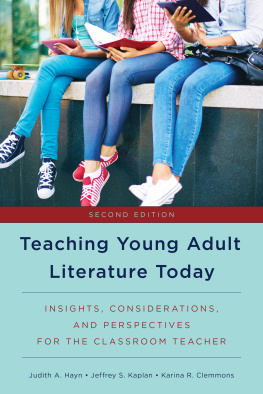
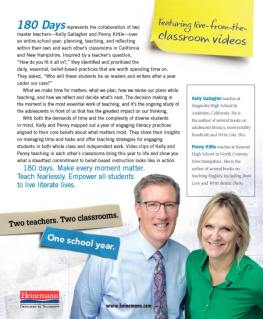
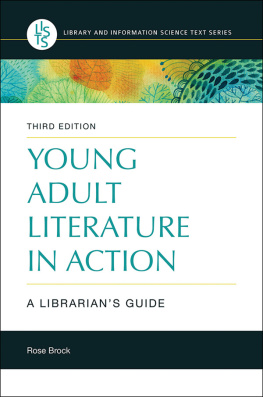

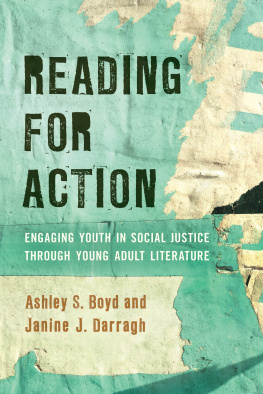

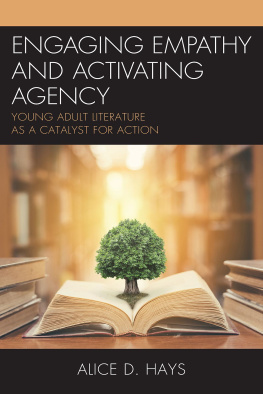
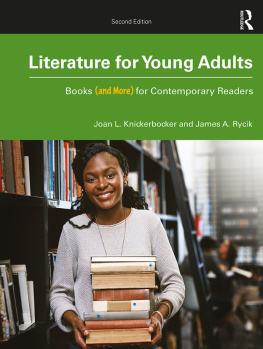

 The paper used in this publication meets the minimum requirements of American National Standard for Information SciencesPermanence of Paper for Printed Library Materials, ANSI/NISO Z39.48-1992.
The paper used in this publication meets the minimum requirements of American National Standard for Information SciencesPermanence of Paper for Printed Library Materials, ANSI/NISO Z39.48-1992.